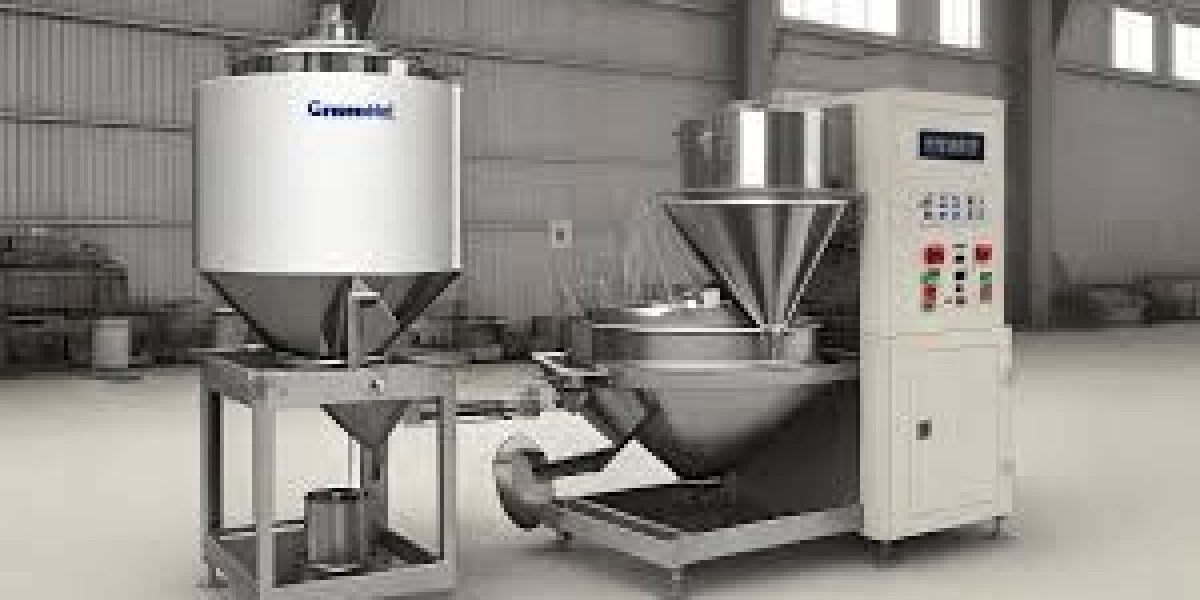However, improper handling and lack of safety measures can lead to serious operational hazards, equipment damage, and contamination. To maintain a safe and efficient working environment, it is essential to follow strict safety guidelines when operating a Rapid Mixer Granulator. This article provides a comprehensive guide to the best safety practices for handling an RMG.
1. Understanding the Equipment
Before operating a Rapid Mixer Granulator, all personnel must be trained on its functionality, components, and working principles. Operators should familiarize themselves with:
The main parts, including the impeller, chopper, discharge unit, and control panel
The function of each component
The sequence of operations in the granulation process
Emergency stop mechanisms and troubleshooting procedures
Proper understanding of the machine minimizes risks and enhances operational efficiency.
2. Personal Protective Equipment (PPE)
Wearing the appropriate Personal Protective Equipment (PPE) is essential to ensure operator safety. The recommended PPE includes:
Lab coats or coveralls to prevent contamination and exposure to chemicals
Safety gloves to protect hands from moving parts and chemicals
Safety goggles to prevent dust or granules from entering the eyes
Face masks or respirators to avoid inhalation of fine particles
Safety shoes with non-slip soles to prevent workplace accidents
Strict adherence to PPE requirements reduces the risk of injury and contamination during operation.
3. Pre-Operational Checks
Before starting the Rapid Mixer Granulator, perform a thorough inspection to ensure safe operation. Key pre-operational checks include:
Inspecting the machine for any loose bolts, broken parts, or signs of wear and tear
Ensuring that the electrical connections and grounding are secure
Verifying that all safety interlocks are functional
Checking for any residual materials from previous operations to prevent cross-contamination
Confirming that the discharge valve is properly closed before starting the machine
Addressing these checks before operation minimizes the chances of equipment failure and operational hazards.
4. Proper Loading of Materials
Incorrect loading of materials can cause mechanical strain on the machine and affect granulation quality. Follow these guidelines:
Do not exceed the maximum load capacity specified by the manufacturer
Ensure uniform distribution of materials inside the mixing chamber
Add materials in a sequential manner to avoid clumping or uneven granulation
Avoid overfilling, as it can lead to inefficient mixing and damage to machine components
Proper material loading prevents excessive wear and tear and ensures consistent granulation results.
5. Safe Operation Procedures
During operation, adhere to safety protocols to ensure smooth functioning. Operators should:
Start the machine only after verifying that all safety locks and covers are in place
Monitor the granulation process through control panels and visual inspection
Avoid placing hands near moving parts during operation
Maintain the recommended speed settings for mixing and granulation
Follow the prescribed time cycle to prevent overheating or excessive granulation
Strict adherence to operating procedures prevents accidents and enhances product consistency.
6. Handling Electrical and Mechanical Safety
As an electromechanical device, a Rapid Mixer Granulator poses potential electrical and mechanical hazards. To mitigate these risks:
Ensure the machine is properly grounded to prevent electrical shocks
Avoid operating the machine in a wet or damp environment
Never open the control panel or tamper with electrical connections while the machine is running
Schedule routine maintenance checks on electrical components
Immediately shut down the machine in case of any abnormal noise, vibration, or sparking
Following these precautions minimizes electrical and mechanical risks associated with RMG operation.
7. Cleaning and Maintenance Protocols
Regular cleaning and maintenance are essential to prevent contamination and equipment breakdowns. Best practices include:
Cleaning the mixing chamber, impeller, and chopper after each batch to prevent residue buildup
Using approved cleaning agents that do not react with materials being processed
Inspecting and lubricating moving parts to reduce friction and wear
Replacing worn-out parts such as seals, gaskets, and blades to maintain efficiency
Keeping a maintenance log to track servicing and repairs
A well-maintained RMG ensures consistent performance and prolongs the machine’s lifespan.
8. Emergency Procedures
Every operator must be trained in emergency response protocols to handle unforeseen situations effectively. Essential emergency measures include:
Knowing the location and operation of emergency stop buttons
Shutting down the machine immediately in case of mechanical failure or electrical faults
Reporting any safety hazards or malfunctions to supervisors immediately
Having fire extinguishers and first aid kits readily available in case of fire or injuries
Following lockout/tagout (LOTO) procedures before performing any maintenance work
Emergency preparedness minimizes the impact of accidents and enhances workplace safety.
9. Compliance with Regulatory Standards
Adhering to industry standards and regulations ensures both operator safety and product quality. Operators should comply with:
Good Manufacturing Practices (GMP) for pharmaceutical granulation
Occupational Safety and Health Administration (OSHA) guidelines
Food and Drug Administration (FDA) regulations for hygiene and safety in food production
International standards such as ISO and CE certification requirements
Compliance with these standards ensures safe and efficient granulation processes.
10. Continuous Training and Safety Awareness
Ongoing training and awareness programs help reinforce safety practices. Employers should:
Conduct regular safety drills and refresher training for operators
Educate workers on new safety guidelines and technological updates
Encourage reporting of safety concerns and near-miss incidents
Provide access to updated manuals and standard operating procedures (SOPs)
Continuous learning and safety awareness contribute to a culture of safety in the workplace.
Conclusion
Operating a Rapid Mixer Granulator requires strict adherence to safety guidelines to ensure both equipment efficiency and operator well-being. By following proper PPE usage, pre-operational checks, correct loading procedures, and maintenance protocols, operators can significantly reduce the risks associated with granulation. Additionally, compliance with regulatory standards and ongoing training fosters a safe working environment. Implementing these best practices not only improves safety but also enhances productivity and product quality in industries relying on granulation processes.



